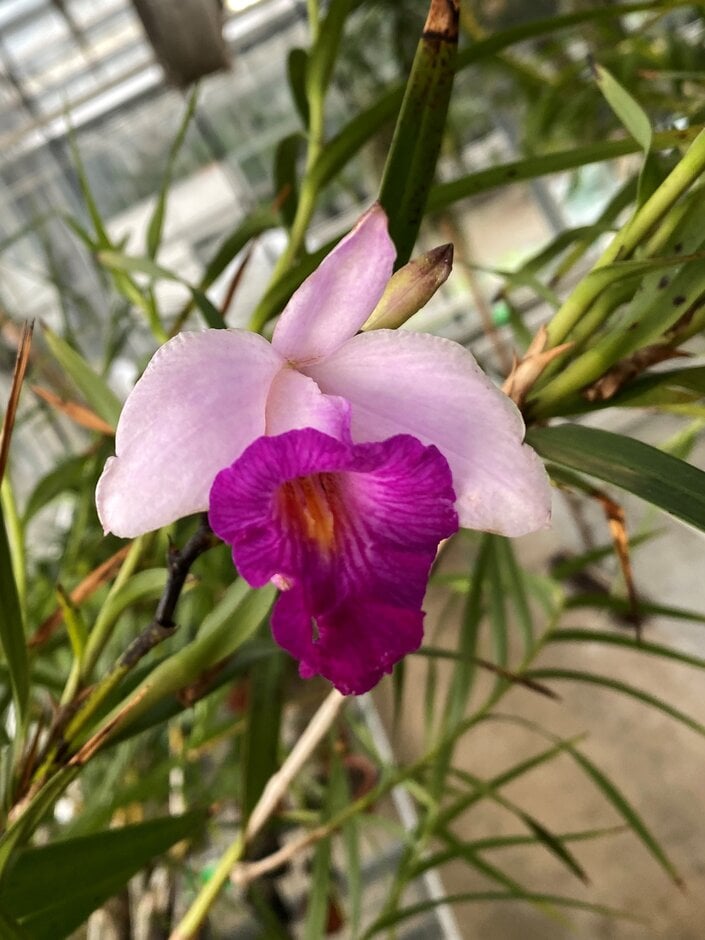Arundina graminifolia
A large, tropical orchid with a grass-like appearance, producing a clump of many thin stems up to 2m tall. Alternate leaves are lance-shaped and bamboo-like, 20cm long and 2cm wide. Up to ten pink or lilac flowers open one at the time, from the tips of the stems. Flowers are short-lasting, but the succession prolongs the time of flowering. Each flower measures 5-8cm in diameter

Size
Ultimate height
1.5–2.5 metresTime to ultimate height
5–10 yearsUltimate spread
1–1.5 metresGrowing conditions
Moisture
Moist but well–drainedpH
NeutralColour & scent
| Stem | Flower | Foliage | Fruit | |
| Spring | Green | |||
|---|---|---|---|---|
| Summer | White Pink | Green | ||
| Autumn | White Pink | Green | ||
| Winter | White Pink | Green |
Position
- Full sun
- Partial shade
Aspect
East–facing or South–facing or West–facing
Exposure
Exposed or Sheltered Hardiness
H1ABotanical details
- Family
- Orchidaceae
- Native to GB / Ireland
- No
- Foliage
- Evergreen
- Habit
- Columnar upright, Tufted, Clump forming
- Name status
Correct
- Plant range
- Himalaya, W China
How to grow
Cultivation
Grow in a free-draining orchid mix. Provide bright light conditions, but shade from hot, direct mid-day sun. Ideal temperatures are 15°C minimum in winter and up to maximum 28 °C during summer daytime. Water and feed plants regularly during the growing season and ensure that all water drains away, preventing the plant sitting in wet. Provide enough humidity by regular misting. Reduce watering and feeding in winter months and keep in a bright, sunny position. As with many orchids, they grow best when well-established and slightly pot-bound. See also indoor orchid cultivation
Propagation
Propagation by seed is only possible in controlled laboratory environment. Mature plants produce sideshoots (keiki) from tips of flowered stems. These can be removed and potted into free-draining orchid propagation mix. Place potted keiki in a bright, humid and warm location to root
Suggested planting locations and garden types
- Conservatory and greenhouse
Pruning
No pruning required
Pests
May be susceptible to mealybugs, aphids, thrips and scale insects
Diseases
Generally disease-free
Get involved
The RHS is the UK’s gardening charity, helping people and plants to grow - nurturing a healthier, happier world, one person and one plant at a time.